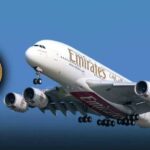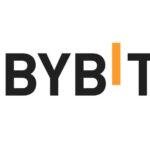Wouldn’t it be nice when you don’t need to worry about the authenticity of anything you purchase from a designer or about losing your passport and vaccination records as you travel abroad? Blockchain credentials provide an additional protection layer from fraudulent and replicated licenses, badges, diplomas, or certificates. Digital credentials are stored in a cryptographically secured, always-on, distributed database using decentralized blockchain technology, making it nearly impossible to falsify, edit, or erase the achievement record.
Credentials are not novel and have been around for decades to verify or authenticate qualifications, skills, or authority. Blockchain digital credentials are gaining momentum, with 85% of the majority accepting them for their training courses. Recent advancements in blockchain technology have allowed verified digital identities to meet the criteria necessary for widespread use and acceptance.
The Blockchain Credentials Process: How Does It Work?
Blockchain technology offers high security both for the certificate provider and the certificate holder. Users can validate their digital credentials with blockchain through their organization. After enabling the digital credentials, it will automatically be transmitted to the blockchain upon confirmation. The third party associated with blockchain technology will verify the credentials.
Blockchain Makes Digital Identity Trusted
Digital credentials offer authentication, data integrity, reliability, and validity by leveraging blockchain technology. Users can share digital credentials using QR codes or public and private keys. If the data or credentials are highly-sensitive, only three participants such as the verifier, issuer, and holder will be involved in authenticating the case. Managing several physical papers is no longer a burden with digital credentials. Further, they reduce fraud and misconduct by allowing owners to transmit the data to the selected verifier.
Initial Adoption Of Blockchain Credentials And Future Applications
As digital credentials become more widely used, they will be adopted in different phases and initially be implemented in more obvious ways. In the years to come, as people and organizations realize the benefits of digital credentials, companies and governments with marginal use cases will start to rely on them. It is predicted that licenses for occupational and professional employment, permits for recreational activities, training certificates, and vaccination verification will be the primary application cases. In the next adoption phase, credentials will be used to verify the authenticity of physical products including equipment, tools, parts, clothing items, and many other things. Medical credentials, driver’s licenses, and healthcare data are some of the most common use cases.
Developing A Blockchain-Based Digital Credential System For Learners
The digitization of educational or training certificates has increased workplace diversity, expanded the talent pool, and made specialist talents more accessible. With the adoption of this system, workers and students will have verified confirmation of their skills. They will be confident and ready to apply in the workplace. For their next course or degree, 86.5% of students want access to blockchain digital credentials, BCdiploma teams reported. In this way, learners will have access to valid credentials over time. They will not have to verify them by undergoing any procedures.




























